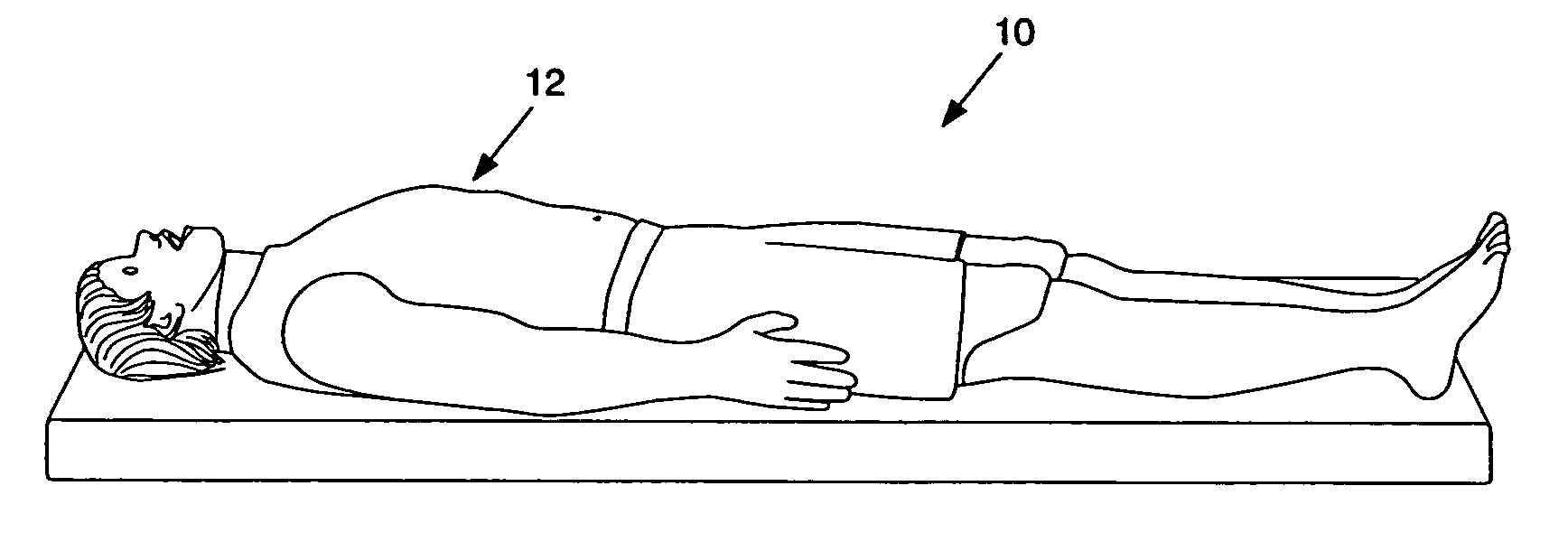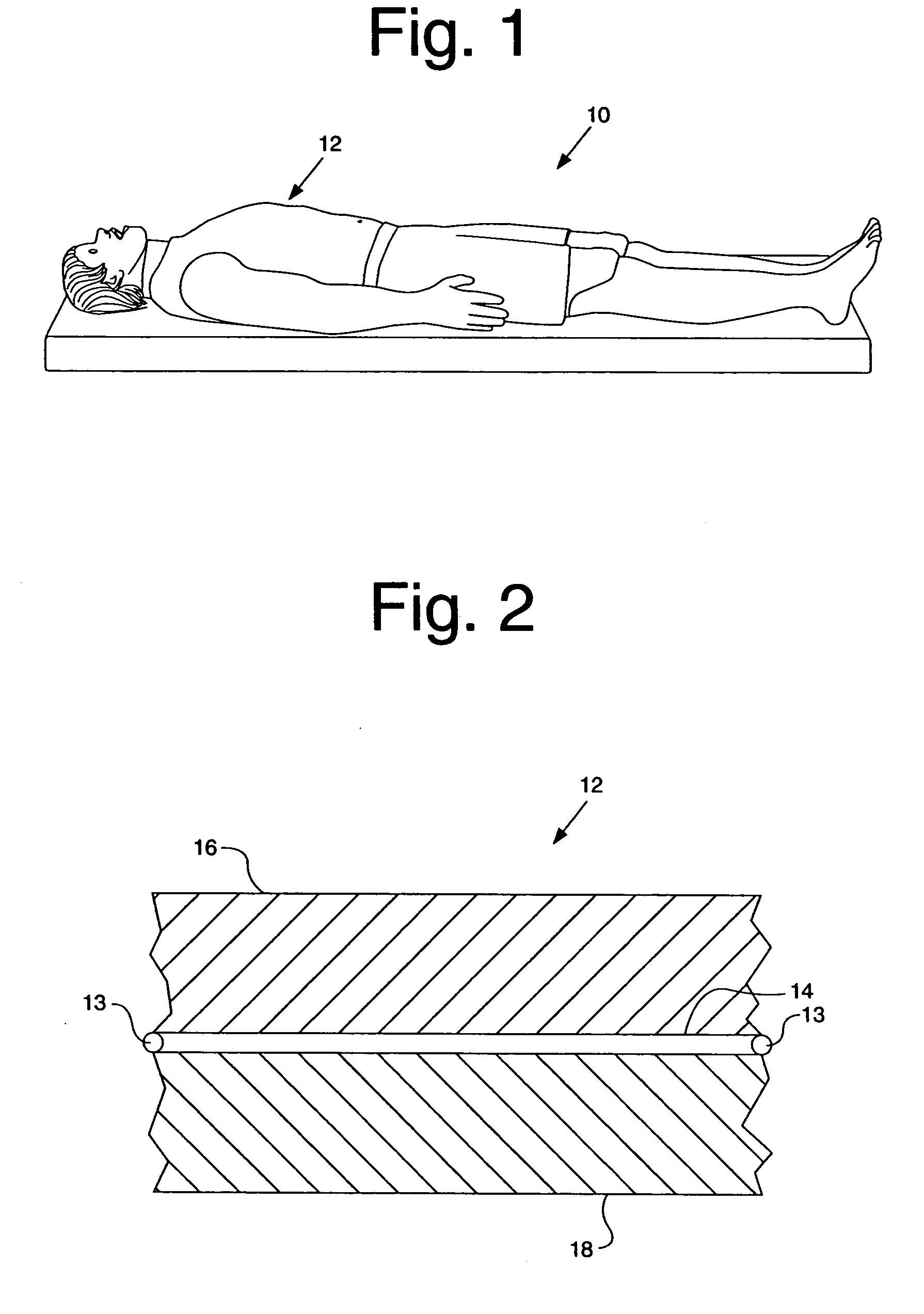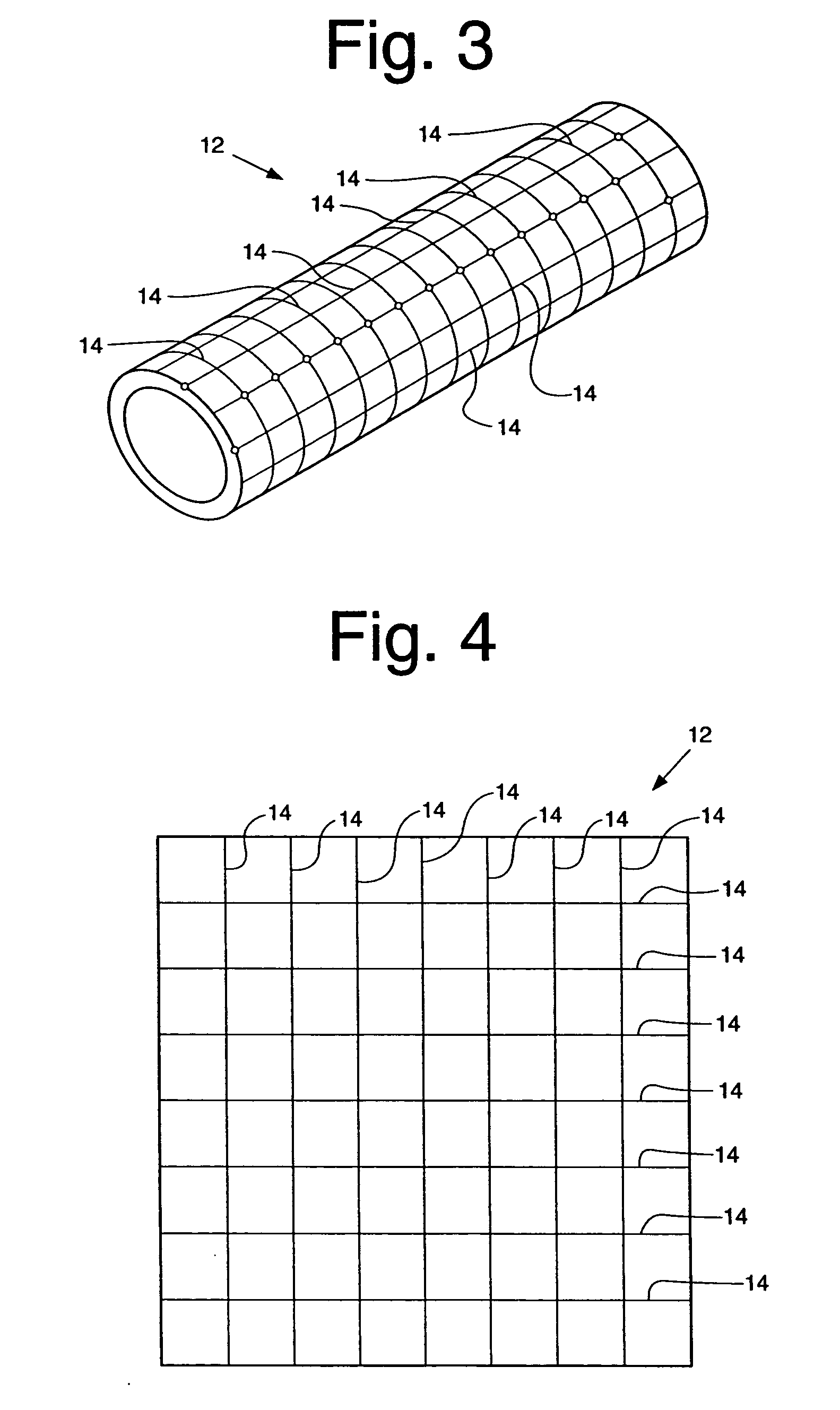Medical simulator apparatus and method
a simulator and simulator technology, applied in the field of medical simulators, can solve the problems of inability to mimic the feel, reflexes, tightening of human tissue, and general lack of genuine touch and feel of current mds systems
- Summary
- Abstract
- Description
- Claims
- Application Information
AI Technical Summary
Benefits of technology
Problems solved by technology
Method used
Image
Examples
first embodiment
[0035]FIG. 3 illustrates a matrix of the polymer layer 12 with the electroactive fiber 14. The matrix is in the shape of a tube like a blood vessel with several longitudinal and transverse fibers thereon.
[0036]FIG. 4 is an array of fibers 14 embedded within a polymer layer 12. In the depicted embodiment, the matrix has a square or rectangular shape. Such a structure may mimic the walls of large organs, skin or muscle walls.
[0037]FIG. 5 depicts an array wherein activating fibers 14 are interspersed with sensors 20, either in alternating squares or in all squares as shown in FIG. 5, which may be attached to a separate circuit and provide feedback to a control system.
third embodiment
[0038]FIG. 6 is the matrix with the array of FIG. 4 in a shape of a pouch or other closed or open shell, hollow or otherwise, that may mimic a human organ. The various combinations of the tube matrix, the square or rectangular array matrix or the bag may be used to simulate an entire human organ. The various matrixes may be assembled together in the MDS system 10 as shown in FIG. 1.
[0039]FIG. 7 illustrates a control system 100 for use in conjunction with the MDS system 10. The control system includes a computer having a microprocessor 110, an amplifier 112, a medical simulation device 114 such as a probe. The computer 110 is connected to the amplifier 112. The amplifier is connected to the MDS system 10, and specifically to the electrodes 13. The computer 110 sends a signal to the amplifier 112, which in turn sends a signal to the appropriate electrode to selectively activate or deactivate a specific electroactive fiber or group of fibers. The fibers' characteristics...
PUM
 Login to View More
Login to View More Abstract
Description
Claims
Application Information
 Login to View More
Login to View More - R&D
- Intellectual Property
- Life Sciences
- Materials
- Tech Scout
- Unparalleled Data Quality
- Higher Quality Content
- 60% Fewer Hallucinations
Browse by: Latest US Patents, China's latest patents, Technical Efficacy Thesaurus, Application Domain, Technology Topic, Popular Technical Reports.
© 2025 PatSnap. All rights reserved.Legal|Privacy policy|Modern Slavery Act Transparency Statement|Sitemap|About US| Contact US: help@patsnap.com



